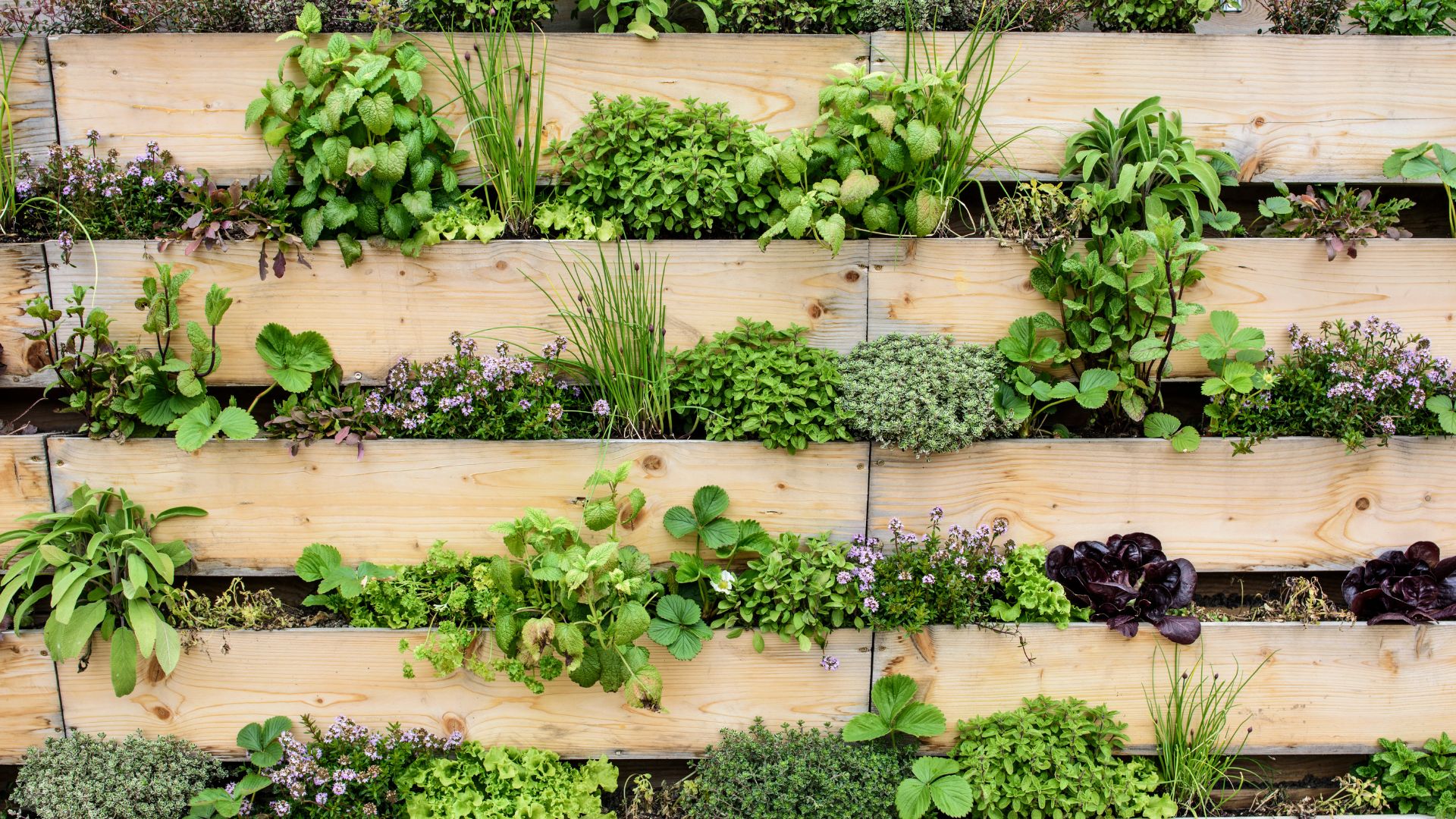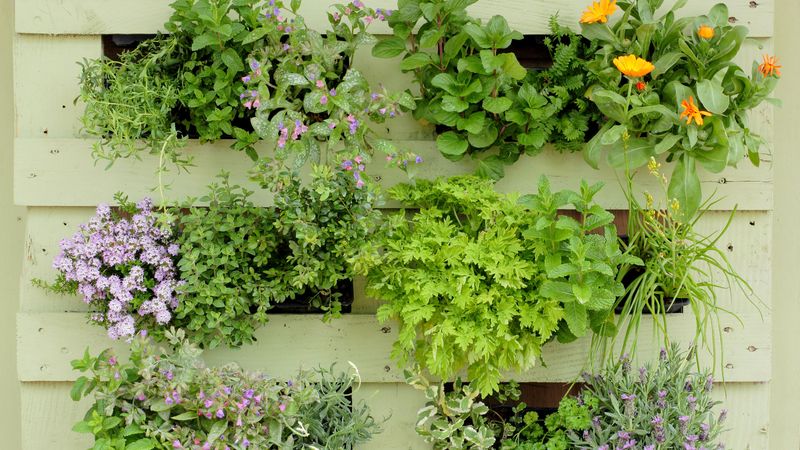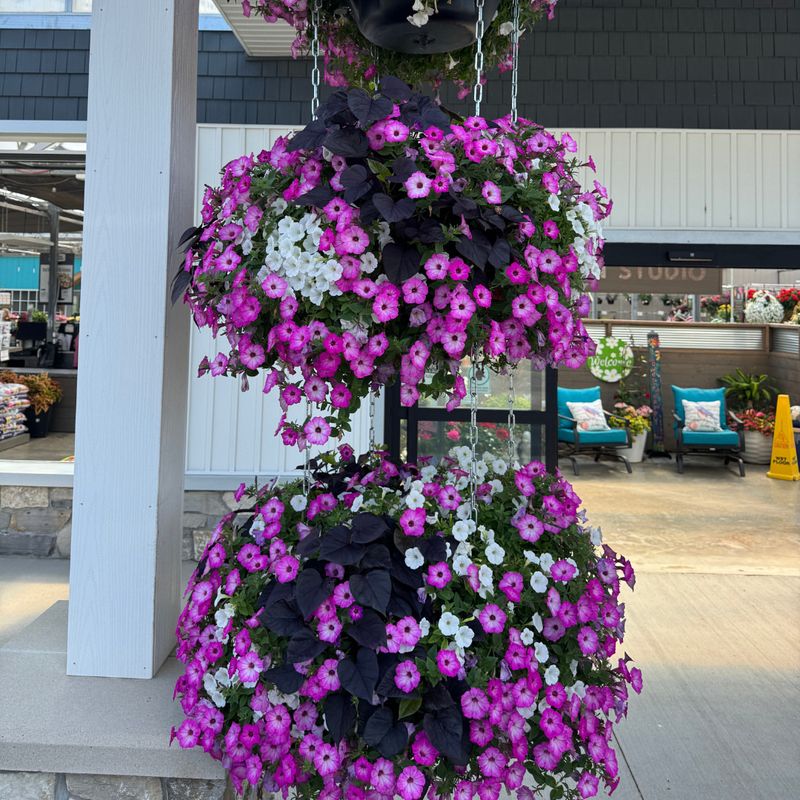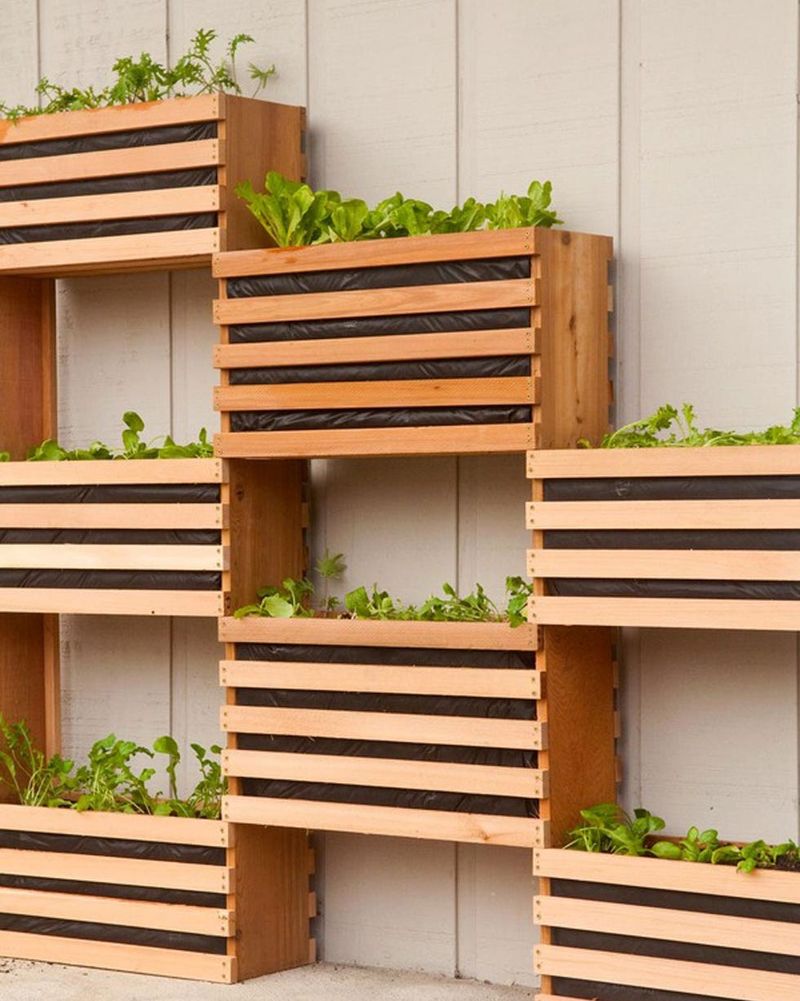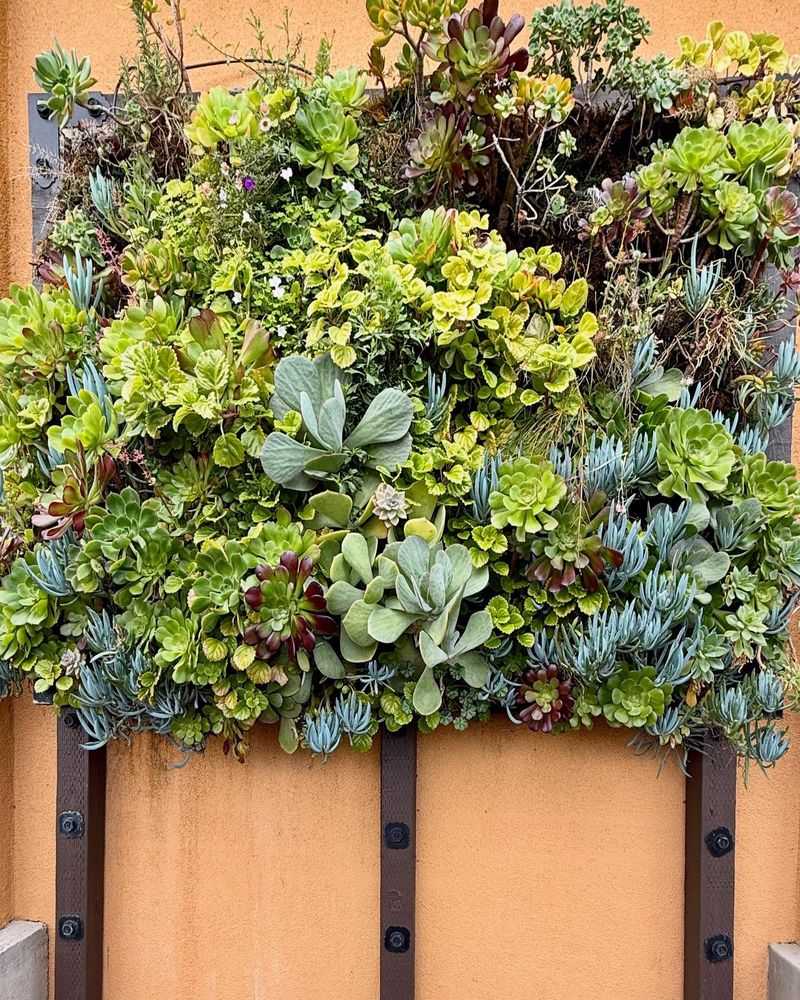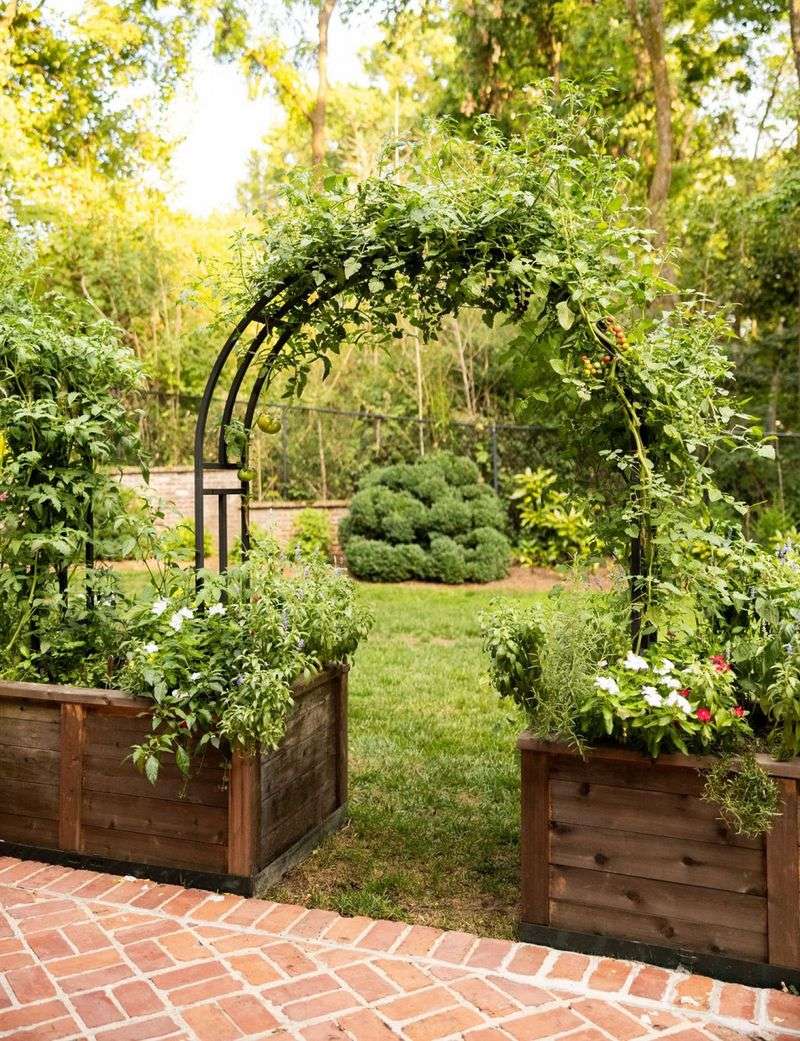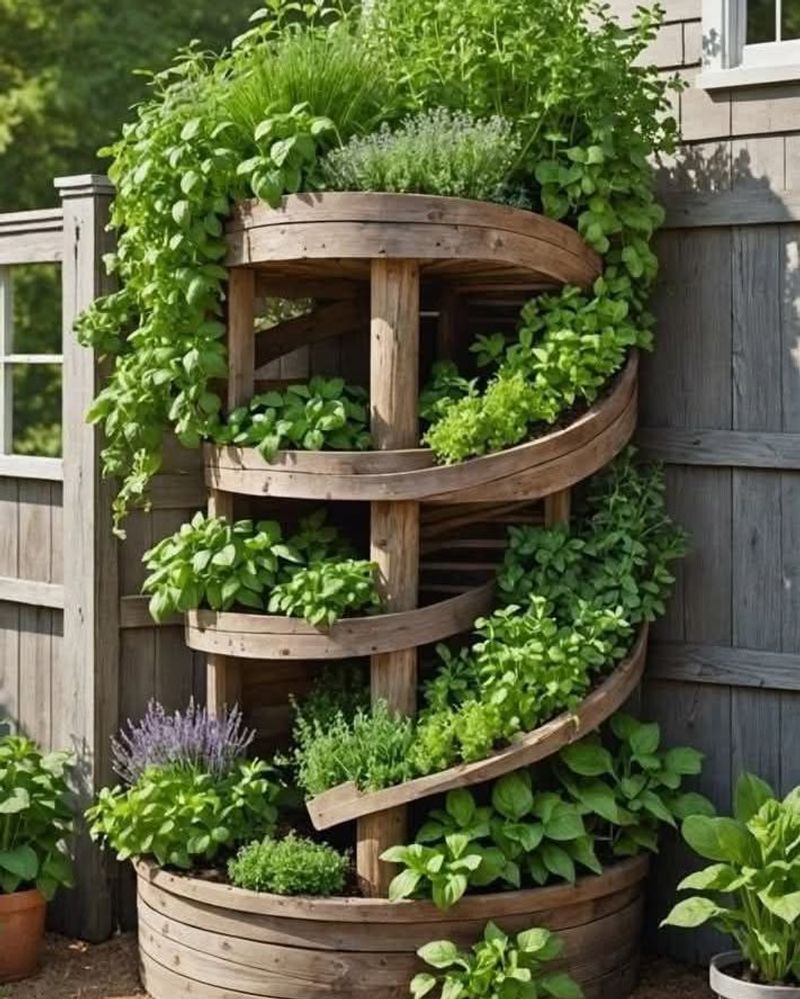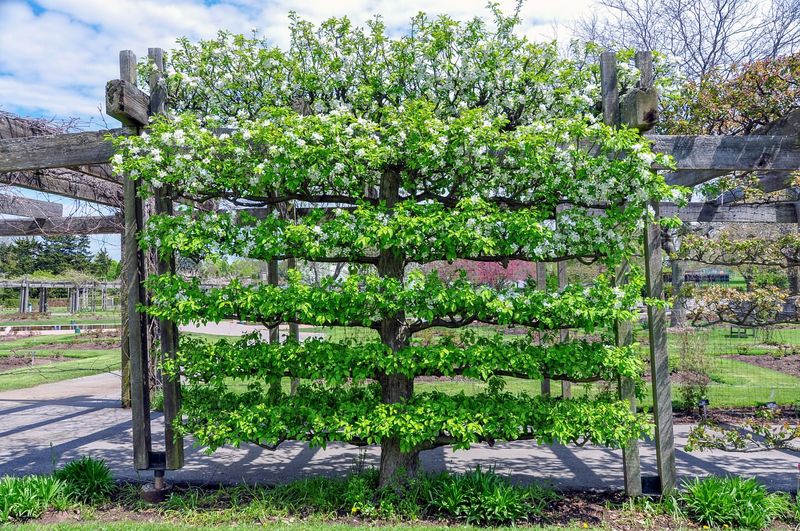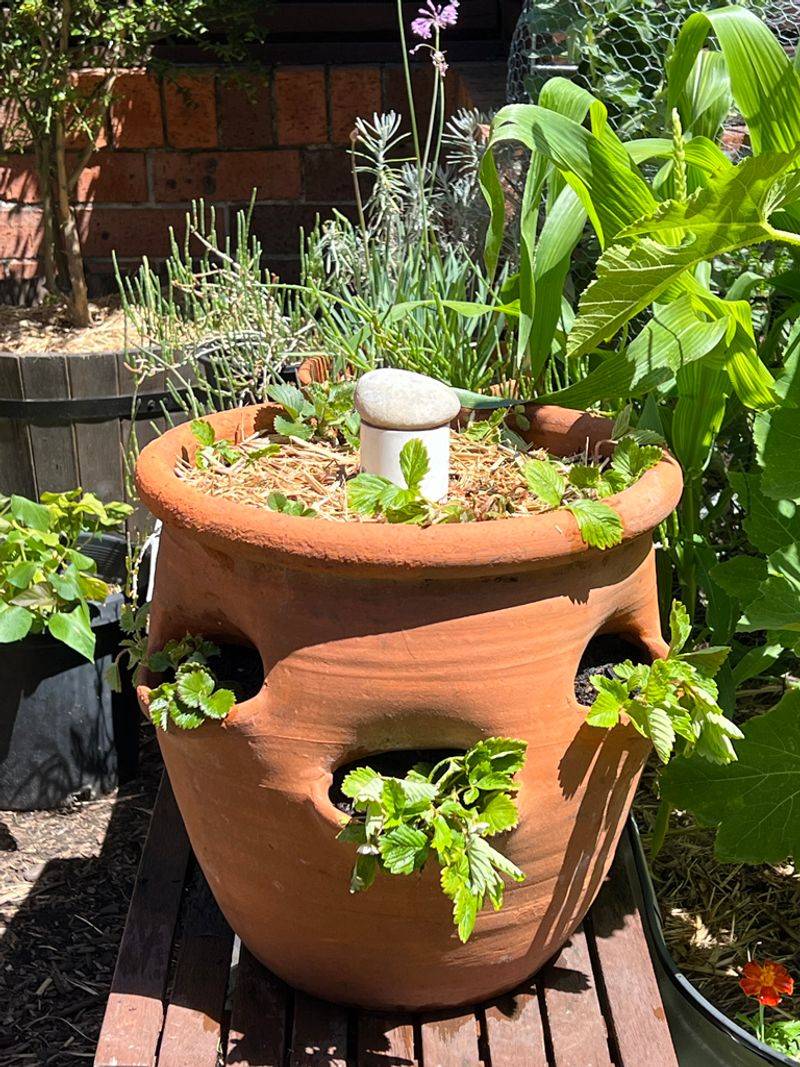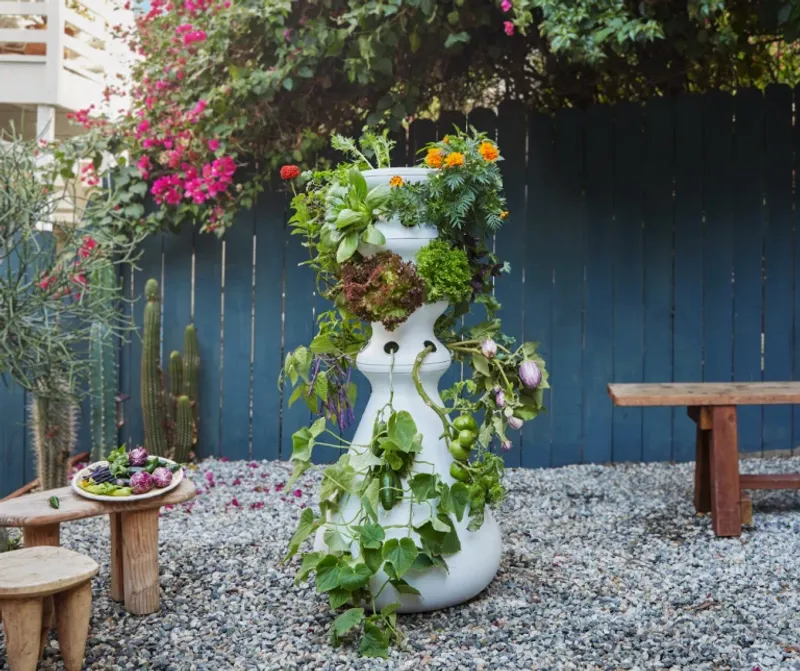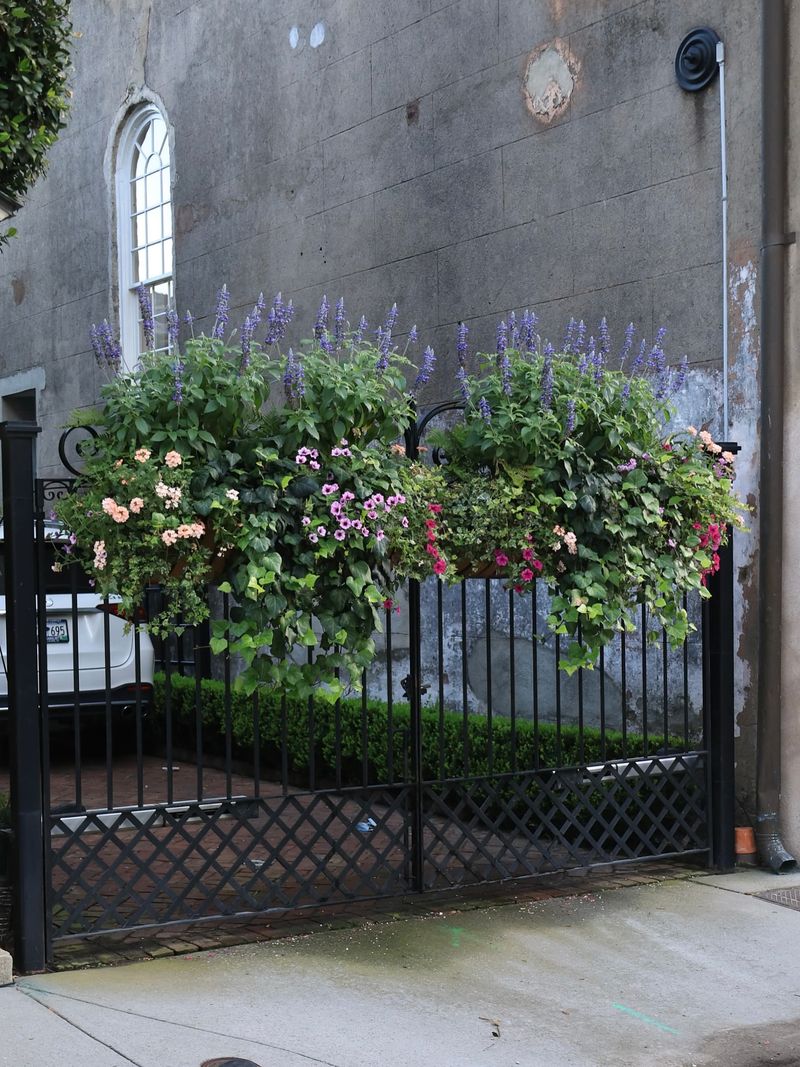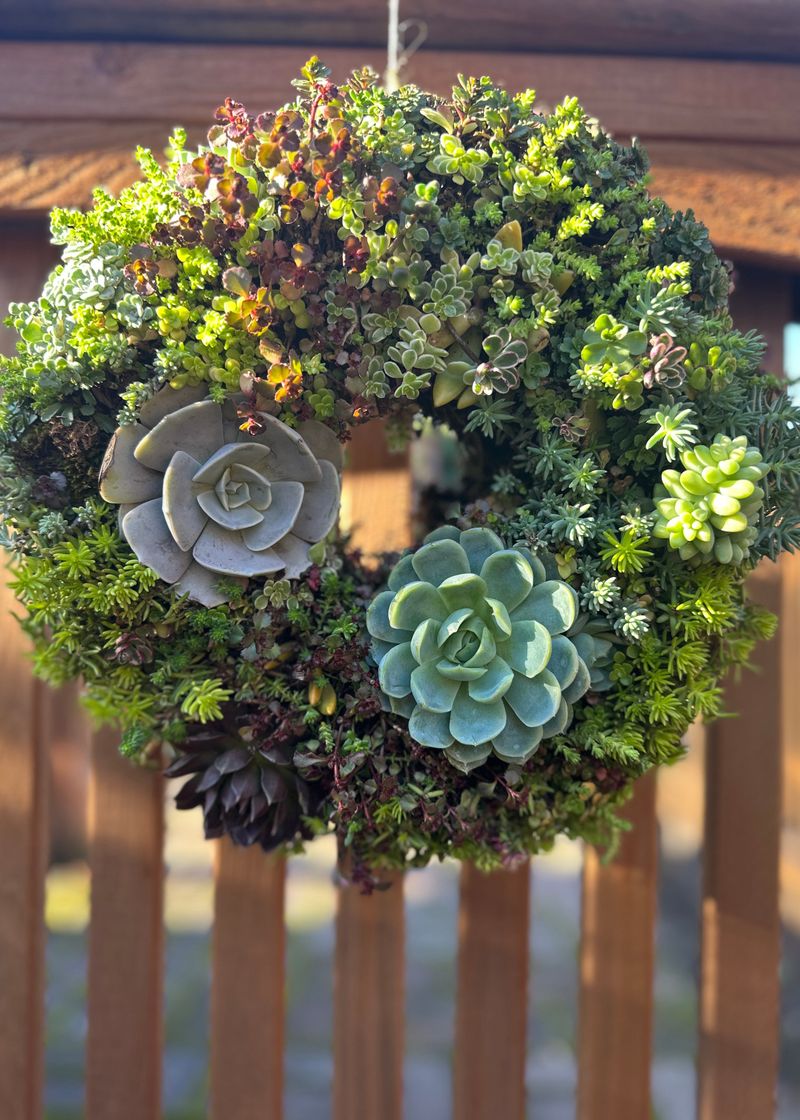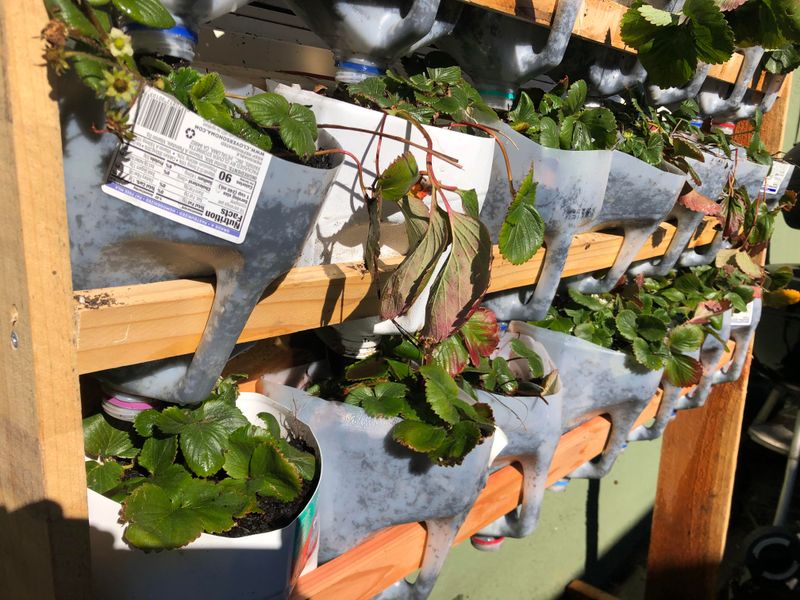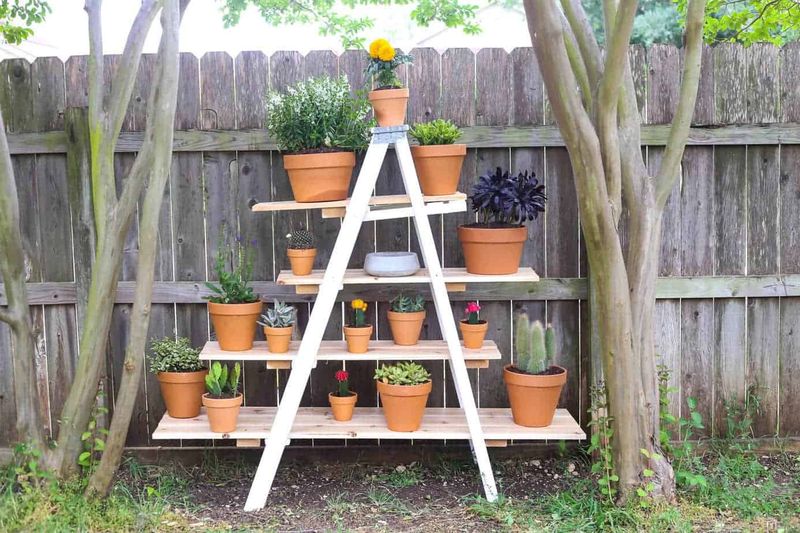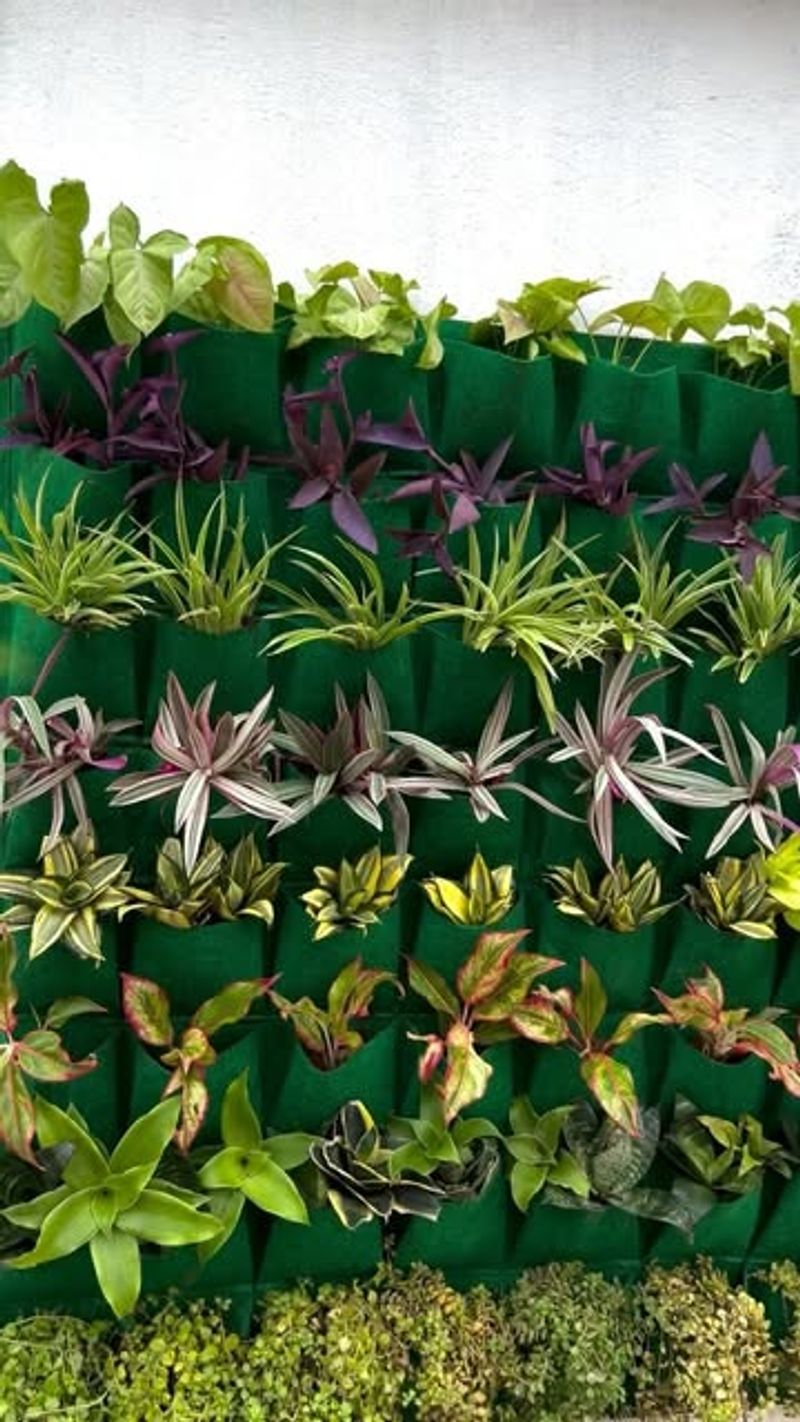Living in California with a small yard doesn’t mean giving up on gardening—it just means growing smarter. Vertical gardening lets you build upward, saving space while adding eye-catching layers of greenery. It’s also ideal for drought-prone areas, often using less water than traditional beds.
I’ve spent years turning my tiny Los Angeles patio into a lush retreat with vertical techniques. The change has been incredible—not just in looks, but in how much food I can grow. Neighbors are always amazed at how many plants fit into such a compact space.
Whether you’ve got a balcony, a narrow side yard, or just a sliver of outdoor room, vertical gardening can unlock your space’s full potential. These methods pair perfectly with native and drought-tolerant plants, creating a garden that’s as practical as it is beautiful.
1. Pallet Gardens
Rescued wooden pallets make fantastic vertical planters after a bit of modification. Simply stand a pallet upright against a wall, line the back with landscape fabric, and fill the spaces between slats with soil.
My neighbor in San Diego transformed her concrete patio with three painted pallet gardens, growing strawberries, herbs, and succulents in the same small space. The wood naturally weathers to a beautiful silvery tone that complements California’s coastal aesthetic.
2. Hanging Basket Tiers
Start with a sturdy shepherd’s hook or bracket and create a vertical hanging system with baskets at different heights. Chain-link systems allow you to stack 3-5 baskets in the same footprint.
For California gardens, line baskets with coco fiber to retain moisture during hot summers. Fill with drought-tolerant cascading plants like trailing petunias, sweet potato vine, or native California strawberries for a gorgeous display that maximizes vertical space.
3. Wall-Mounted Gutter Gardens
Repurpose vinyl gutters into sleek horizontal planters that mount directly to walls or fences. Drill drainage holes every few inches, cap the ends, and secure them in a staggered pattern for visual interest.
These narrow planters work beautifully for lettuce, herbs, and strawberries. The lightweight design makes them perfect for stucco walls common in California homes. Add a simple drip irrigation system along the top gutter to water all levels efficiently.
4. Succulent Living Walls
Frame-based succulent walls thrive in California’s dry climate and require minimal maintenance once established. Start with a wooden frame fitted with wire mesh and filled with cactus soil mix.
Plant small succulent cuttings through the mesh openings, misting occasionally until rooted. The living tapestry will fill in within months. This approach worked wonders on my west-facing fence that gets intense afternoon sun – five years later, it’s still the highlight of my yard.
5. Trellised Vegetable Gardens
Install cattle panels or concrete reinforcing mesh as arched trellises over narrow garden beds. These industrial materials create surprisingly beautiful structures that maximize growing space.
Train vining vegetables like cucumbers, beans, and small melons to grow upward. The vertical orientation improves air circulation, reducing fungal issues common in California’s coastal areas. Bonus: harvesting becomes easier when produce hangs at eye level rather than hiding under foliage.
6. Vertical Herb Spirals
A herb spiral creates multiple microclimates in a compact vertical structure. Build a spiral-shaped mound of soil supported by stones or bricks, rising about 3-4 feet high while only occupying a 5-foot diameter footprint.
Place sun-loving Mediterranean herbs like rosemary and lavender at the sunny top and sides. Use the shadier, moister areas at the base for mint and parsley. This design is particularly suited to California’s varied microclimates and conserves water through its smart design.
7. Shoe Organizer Herb Garden
Canvas hanging shoe organizers transform into perfect pocket planters for herbs and small leafy greens. Hang them on a sunny fence or wall, cut drainage holes in each pocket, and fill with quality potting soil.
This method keeps herbs contained – particularly important for invasive varieties like mint. During California’s occasional frost warnings, these portable gardens can be temporarily moved to protected locations. I’ve had one hanging on my south-facing garage wall for three years now!
8. Espalier Fruit Trees
Espalier is an ancient technique of training fruit trees to grow flat against walls or fences in decorative patterns. Apple, pear, and fig trees adapt particularly well to this method and thrive in many California climate zones.
Create a simple horizontal cordon system using eye screws and wire. Prune and train branches to follow the horizontal supports. Despite their compact footprint, these trees produce surprisingly abundant harvests while doubling as living sculpture in small yards.
9. Tiered Strawberry Towers
Stack terracotta pots in decreasing sizes to create a compact strawberry tower. Alternatively, use PVC pipe with holes drilled for plants. Both designs allow dozens of strawberry plants to thrive in just a few square feet.
California’s mild coastal climate is ideal for ever-bearing strawberry varieties that produce for months. Position your tower where it receives morning sun but afternoon shade during the hottest months. The vertical design makes harvesting easy and keeps berries clean and slug-free.
10. Vertical Hydroponic Systems
Modern vertical hydroponic towers use minimal water while maximizing growing space – perfect for California’s drought conditions. These systems circulate nutrient-rich water through stacked growing pods without soil.
Leafy greens, herbs, and strawberries thrive in these towers, which can grow dozens of plants in a 2×2 foot footprint. The water usage is approximately 90% less than traditional gardening. Solar-powered systems are particularly appropriate for California’s abundant sunshine.
11. Fence-Mounted Window Boxes
Transform fences into growing space by mounting decorative window boxes along the top or in tiers. Cedar boxes complement California’s craftsman-style homes, while metal ones suit modern aesthetics.
Choose plants with similar water needs for each box. Drought-tolerant natives like California fuchsia and coastal sunflower create beautiful cascades of color. During winter rains, these elevated planters provide excellent drainage, preventing root rot common in ground-level gardens.
12. Vertical Succulent Wreaths
Create living wreaths using wire frames lined with sphagnum moss and filled with soil. Plant small succulent cuttings through the moss, allowing them to root and grow outward in all directions.
These living sculptures can hang on walls, fences, or even pergolas. In Southern California’s mild climate, these wreaths thrive year-round with minimal care. They’re particularly striking when grouped in collections of different sizes on an otherwise plain wall.
13. Bottle Tower Gardens
Recycled plastic bottles become vertical growing columns with this ingenious technique. Cut openings in the sides of large bottles, stack them with irrigation channels between, and secure to a sunny wall.
These towers are particularly suited for herbs and greens in small California spaces. The enclosed design reduces evaporation – a major advantage during drought periods. My friend in Oakland grows all her salad greens year-round in a tower system made from repurposed 2-liter soda bottles.
14. Ladder Plant Displays
Old wooden ladders, either leaning against walls or freestanding in A-frame configurations, create instant vertical gardening space. Each rung becomes a shelf for potted plants at different heights.
Paint the ladder in weatherproof colors that complement your outdoor space. Position sun-loving plants on upper rungs and shade-preferring varieties below. This mobile system allows for seasonal adjustments – during California’s hottest months, simply move the ladder to provide plants with afternoon shade.
15. Vertical Pocket Planters
Fabric pocket planters that hang like shoe organizers create lush living walls even in the smallest spaces. Choose heavy-duty outdoor fabric versions designed specifically for plants, with proper drainage built in.
Fill pockets with drought-tolerant groundcovers, trailing herbs, and compact flowering plants. The fabric breathes well in California’s hot climate, keeping roots cooler than plastic alternatives. For extremely sunny exposures, choose light-colored planters that won’t absorb excessive heat.

